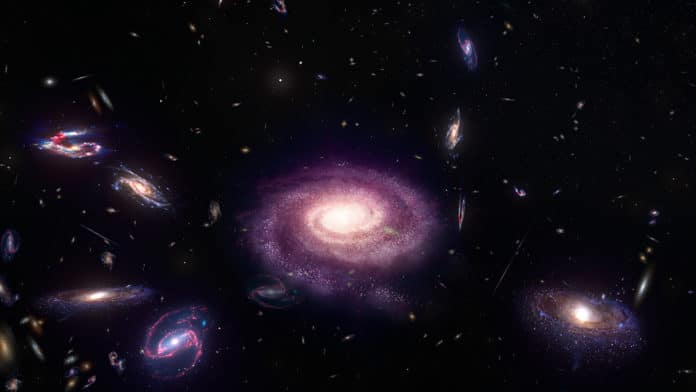Stars can be considered as enormous nuclear-powered processing plants. They take lighter elements like hydrogen and helium, and, over billions of years, produce the heavier elements of the periodic table.
Understanding star formation requires the very difficult task of using powerful telescopes to observe galaxies many billions of light-years away in the distant Universe.
It is quite easy to observe nearby galaxies. Astronomers can forensically piece together the history of their lives by using their light. This allows scientists to determine how and when they formed stars.
Customarily, astronomers examining star formation histories assumed the metallicity—or amount of heavy metals—in a galaxy. But when they used these models to pinpoint when stars in the Universe should have formed, the results didn’t match what they saw through their telescopes.
Lead researcher Dr. Sabine Bellstedt, from ICRAR, said, “The results not matching up with our observations is a big problem. It tells us we’re missing something.”
“That missing ingredient, it turns out, is the gradual build-up of heavy metals within galaxies over time.”
Hence, scientists used a new algorithm to model the energy and wavelengths of light coming from almost 7000 nearby galaxies. Fascinatingly, they successfully reconstructed when most of the stars in the Universe formed.
Associate Professor Aaron Robotham from ICRAR’s University of Western Australia node aid, “This is the first time we’ve been able to constrain how the heavier elements in galaxies change over time based on our analysis of these 7000 nearby galaxies.”
“Using this galactic laboratory on our doorstep gives us lots of observations to test this new approach, and we’re very excited that it works. With this tool, we can now dissect nearby galaxies to determine the state of the Universe, and the rate at which stars form and mass grows at any stage over the past 13 billion years.”
“It’s mind-blowing stuff.”
Bellstedt said, “Most of the stars in the Universe were born in extremely massive galaxies early on in cosmic history—around three to four billion years after the Big Bang.”
“Today, the Universe is almost 14 billion years old, and most new stars are being formed in much smaller galaxies.”
Journal Reference:
- Sabine Bellstedt et al. Galaxy And Mass Assembly (GAMA): a forensic SED reconstruction of the cosmic star formation history and metallicity evolution by galaxy type. DOI:10.1093/mnras/staa2620
